
Sardine and pilchard are common names for various species of small, oily forage fish in the herring suborder Clupeoidei. The term 'sardine' was first used in English during the early 15th century; a somewhat dubious etymology says it comes from the Italian island of Sardinia, around which sardines were once supposedly abundant.

Ficus tinctoria, also known as dye fig, or humped fig is a hemiepiphytic tree of genus Ficus. It is also one of the species known as strangler fig.

The goldstripe sardinella or goldstripe sardine is a species of fish of the family Clupeidae. It is native to shallow tropical waters of the western Indo-Pacific, living at depths down to 70 m, and being associated with coral reefs. It grows up to 17 cm in length and forms large schools.
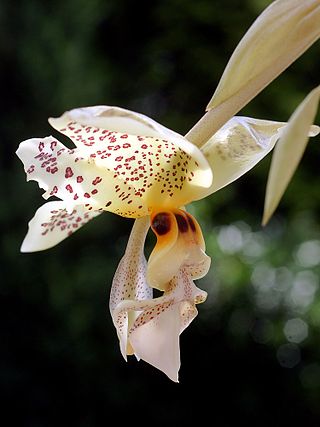
Stanhopea gibbosa is a species of orchids from Colombia and West Ecuador. The name was often misapplied for a species from Costa Rica and Panama which was later described as Stanhopea confusa. Stanhopea carchiensis and Stanhopea impressa are synonyms of Stanhopea gibbosa.

Ancula gibbosa, common name Atlantic ancula, is a species of dorid nudibranch. It is a marine gastropod mollusc in the family Goniodorididae.

Hypogastruridae is a family of springtails. Members of the family are common and widespread with a cosmopolitan distribution of about 660 species in about 40 genera.
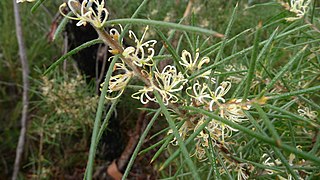
Hakea gibbosa, commonly known as hairy hakea or needlebush hakea, is a shrub of the family Proteaceae, and is endemic to south eastern Australia. It has very prickly foliage, cream-yellowish flowers from April to July, and provides shelter for small birds. It has become an environmental weed in South Africa and New Zealand, where it had been introduced for use as a hedge plant.
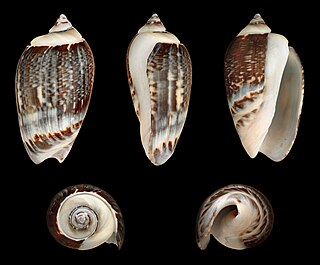
Agaronia gibbosa is a species of sea snail, a marine gastropod mollusk in the family Olividae, the olives.
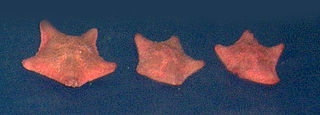
Asterina gibbosa, commonly known as the starlet cushion star, is a species of starfish in the family Asterinidae. It is native to the northeastern Atlantic Ocean and the Mediterranean Sea.

Fritillaria gibbosa is a species of herbaceous perennial plant in the lily family Liliaceae. It is native to Afghanistan, Iran, Pakistan, Turkmenistan, and Transcaucasia.

Trichodesma is a genus of death-watch beetles in the family Ptinidae. There are about 11 described species in Trichodesma.
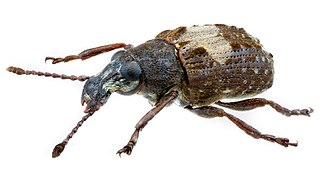
Gonotropis is a genus of fungus weevils in the family of beetles known as Anthribidae. There are about five described species in Gonotropis.

Pseudochalcura gibbosa is a species of chalcid wasp in the family Eucharitidae. It is associated with ants from the Camponotus genus.

Pseudochalcura is a genus of chalcid wasps in the family Eucharitidae. There are about 14 described species in Pseudochalcura.
Ceratophysella denticulata, the mushroom springtail, is a species of springtails in the family Hypogastruridae.
Ceratophysella pratorum is a species of springtails in the family Hypogastruridae.
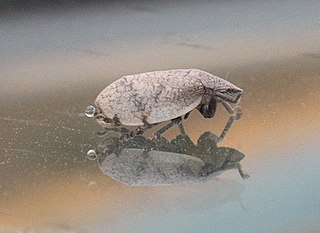
Lepyronia gibbosa, known generally as the hill-prairie spittlebug or great plains spittlebug, is a species of spittlebug in the family Aphrophoridae. It is found in North America.
Jip Jip Conservation Park is a protected area in the Australian state of South Australia located in the state’s south-east in the gazetted locality of Marcollat about 223 kilometres (139 mi) south-east of the state capital of Adelaide and about 50 kilometres (31 mi) north-east of the municipal seat of Kingston SE.

The humpbacked scorpionfish is a species of venomous marine ray-finned fish belonging to the family Scorpaenidae, the scorpionfishes. This species is found in the western Indian Ocean.














